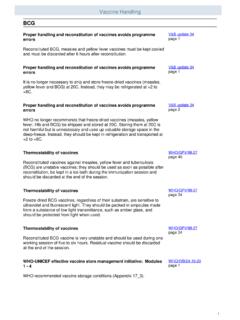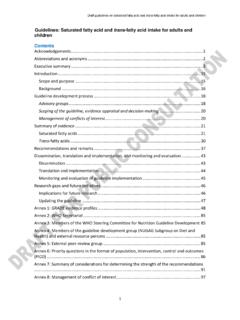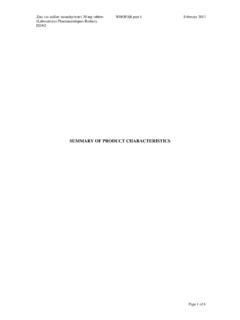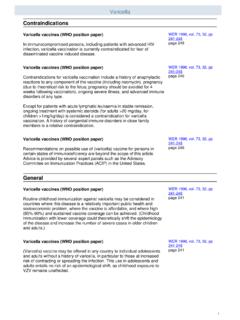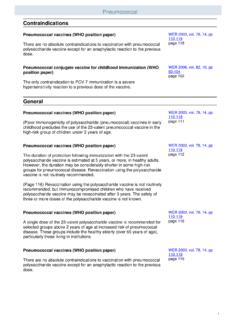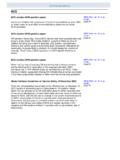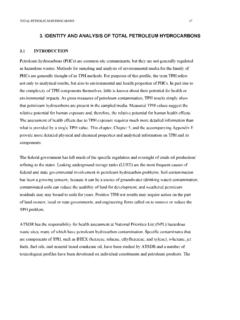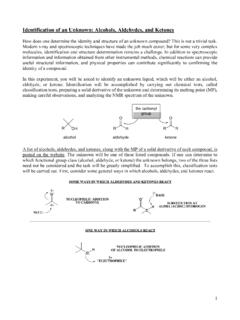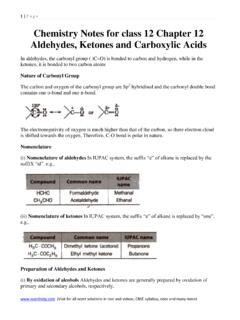Transcription of 6. Process control— introduction to quality control
1 6. Process control introduction to quality control Laboratory quality Management System 72 Role in quality management systemWhat is QC?6-1: IntroductionQC is the part of quality management focused on fulfi lling quality requirements (ISO 9000:2000 [ ]). Simply put, it is examining control materials of known substances along with patient samples to monitor the accuracy and precision of the complete analytic Process . QC is required for accreditation 1981, the World Health Organization (WHO) used the term "internal quality control " (IQC), which it defi ned as a set of procedures for continuously assessing laboratory work and the emergent results.
2 The terms QC and IQC are sometimes used interchangeably; cultural setting and country may infl uence preferences for these terms. In the past few years, "internal quality control ' has become confusing in some settings because of the different meanings that have been associated with the term. Some manufacturers of test kits for qualitative tests have integrated "built-in" controls in the design of their kits, which they sometimes refer to as internal controls.
3 Other manufacturers include their own control materials with the kits they sell and they refer to these as "internal controls", meaning that the materials are meant specifi cally for that manufacturer s kit. Finally, some people refer to any quality control materials that are used in conjunction with test runs as IQC, as in the 1981 WHO defi nition. 72 OrganizationPersonnelEquipmentPurchasing andinventoryProcesscontrolInformationman agementOccurrencemanagementAssessmentFac ilitiesandsafetyCustomerserviceProcessim provementDocumentsandrecordsProcess control is an essential element of the quality management system, and refers to control of the activities employed in the handling of samples and examination processes in order to ensure accurate and reliable testing.
4 Sample management, discussed in Chapter 5, and all quality control (QC) processes are a part of Process control . QC monitors activities related to the examination (analytic) phase of testing. The goal of QC is to detect, evaluate, nd correct errors due to test system failure, environmental conditions or operator performance, before patient results are quality Management System 736-1: IntroductionQC for varying methodsTo avoid confusion, the term " quality control " will be used here to mean use of control materials to monitor the accuracy and precision of all the processes associated with the examination (analytic) phase of control processes vary, depending on whether the laboratory examinations use methods that produce quantitative, qualitative or semiquantitative results.
5 These examinations differ in the following examinations measure the quantity of an analyte present in the sample, and measurements need to be accurate and precise. The measurement produces a numeric value as an end-point, expressed in a particular unit of measurement. For example, the result of a blood glucose test might be reported as 5 examinations are those that measure the presence or absence of a substance, or evaluate cellular characteristics such as morphology. The results are not expressed in numerical terms, but in qualitative terms such as positive or negative ; reactive or nonreactive ; normal or abnormal ; and growth or no growth.
6 Examples of qualitative examinations include microscopic examinations, serologic procedures for presence or absence of antigens and antibodies, and many microbiological procedures. Semiquantitative examinations are similar to qualitative examinations, in that the results are not expressed in quantitative terms. The difference is that results of these tests are expressed as an estimate of how much of the measured substance is present. Results might be expressed in terms such as trace amount , moderate amount , or 1+, 2+, or 3+.
7 Examples are urine dipsticks, tablet tests for ketones and some serologic agglutination procedures. In the case of other serologic testing, the result is often expressed as a titre again involving a number but providing an estimate, rather than an exact amount of the quantity present. Some microscopic examinations are considered semiquantitative because results are reported as estimates of the number of cells seen per low-power fi eld or high-power fi eld. For example, a urine microscopic examination might report 0 5 red blood cells seen per high-power fi eld.
8 Because QC processes differ for these various types of examinations, the presentations for QC will be divided into two chapters. Chapter 7 will address QC for quantitative examinations, and Chapter 8 will address QC for qualitative and semiquantitative quality Management System 746-1: IntroductionSummaryRegardless of the type of examination that is performed, steps for implementing and maintaining a QC programme include: establishing written policies and procedures, including corrective actions training all laboratory staff ensuring complete documentation reviewing quality control responsibilities will be described in more detail in Chapters 7 and 8.
9 QC is part of the quality management system and is used to monitor the examination (analytic) phase of testing. The goal of QC is to detect, evaluate and correct errors due to test system failure, environmental conditions, or operator performance, before patient results are reported. Different QC processes are applied to monitor quantitative, qualitative and semiquantitative of a QC programme 7. Process control quality control for quantitative tests Laboratory quality Management System 76 Role in quality management systemOverview of the processImplementation process7-1: Overview Quantitative tests measure the quantity of a substance in a sample, yielding a numeric result.
10 For example, the quantitative test for blood glucose can give a result of 5 mg/dL. Since quantitative tests have numeric values, statistical tests can be applied to the results of QC material to differentiate between test runs that are in control and out of control . This is done by calculating acceptable limits for control material, then testing the control with the patient s samples to see if it falls within established limits. As a part of the quality management system, the laboratory must establish a QC programme for all quantitative tests.

